Ghana is a country of deep history, breathtaking landscapes, and warm hospitality.
Whether you’re an adventure seeker, history buff, or nature lover, Ghana offers experiences that are both culturally enriching and visually stunning.
From ancient forts that echo the past to lush rainforests teeming with wildlife, here are the top 10 must-visit tourist sites in Ghana for an unforgettable journey.
1. Cape Coast Castle – A Journey Through History
Location: Cape Coast, Central Region, Ghana

Standing along the Gulf of Guinea, Cape Coast Castle is one of Ghana’s most significant historical landmarks. Built by European traders in the 17th century, this fortress played a central role in the transatlantic slave trade, serving as one of the last points of departure for enslaved Africans before being shipped to the Americas.
What to Expect
Walking through the dungeons, where thousands of captives were once held in inhumane conditions, is a deeply emotional experience. The walls of these dark, suffocating rooms still carry the echoes of the past. The tour also includes a visit to the “Door of No Return,” a small, heavy wooden door through which enslaved Africans were led onto ships, never to return to their homeland.
The castle also houses a museum and research center, offering detailed exhibits on the slave trade, colonial rule, and Ghanaian resistance movements.
Why Visit?
- A powerful, thought-provoking experience that sheds light on an important part of world history.
- A chance to learn about Ghana’s past and its role in the transatlantic slave trade.
- Beautiful views of the Atlantic Ocean from the castle’s walls.
Visitor Tips:
✔ Hire a local guide. The guided tours, which last about an hour, are both emotional and educational. Guides provide real stories that make the experience even more impactful.
✔ Visit early in the morning. This helps you avoid crowds and allows for quieter reflection.
✔ Combine with Elmina Castle. Elmina Castle, another historic slave-trading fortress, is just 15 minutes away and equally worth visiting.
2. Kakum National Park – Walk Among the Treetops
Location: Abrafo, Central Region, Ghana
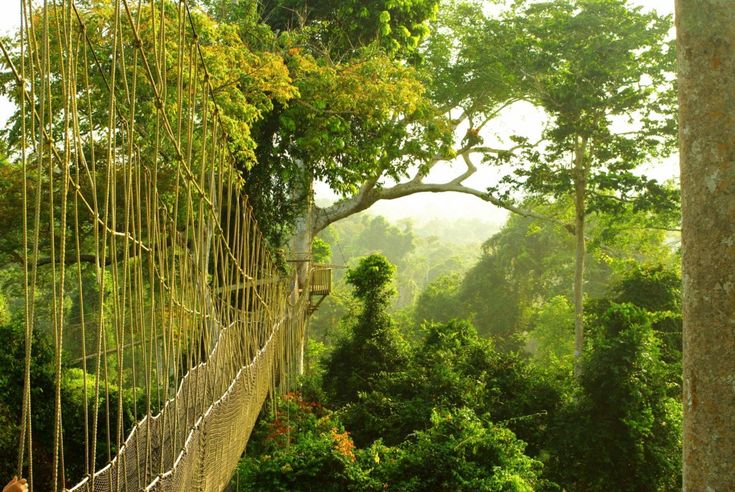
Hidden deep in the Central Region of Ghana, Kakum National Park is a nature lover’s paradise, covering 375 square kilometers of tropical rainforest. The park is home to over 250 bird species, rare butterflies, monkeys, and forest elephants—though spotting them requires patience and luck.
The highlight of the park? The Canopy Walkway, a series of seven suspended bridges, hanging 30 meters (98 feet) above the forest floor. Walking across the 350-meter-long walkway offers a thrilling adventure with breathtaking views of the dense jungle canopy.
What to Expect
- Suspended adventure: A walk across the Canopy Walkway is not for the faint-hearted! The bridges sway slightly as you move, giving an exciting sense of adventure.
- Guided hikes: For those interested in nature and wildlife, opt for a guided forest walk to learn about the park’s diverse plant and animal life.
- Night safari: Looking for something unique? Kakum offers night walks, allowing visitors to experience the rainforest’s nocturnal creatures, including bush babies and owls.
Why Visit?
✔ One of the few canopy walkways in Africa, offering a unique perspective of the rainforest.
✔ A great mix of adventure and relaxation, with scenic views and fresh air.
✔ Perfect for photography lovers—capture stunning jungle shots from above!
Visitor Tips:
✔ Wear comfortable shoes. The hike to the Canopy Walkway is short but slightly steep.
✔ Arrive early. The park gets crowded, especially on weekends and holidays.
✔ Bring insect repellent. The forest is home to mosquitoes, especially in the evenings.
3. Mole National Park – Ghana’s Safari Experience
Location: Damongo, Northern Region, Ghana


If you think you need to visit Kenya or South Africa for an African safari, think again! Ghana’s Mole National Park is the country’s largest wildlife reserve, covering 4,577 square kilometers in the Northern Region. The park is famous for its free-roaming elephants, antelopes, warthogs, baboons, and even the elusive leopard.
Unlike other African safaris where you must stay in a vehicle, Mole offers walking safaris, allowing visitors to get up close with elephants on foot—a truly unforgettable experience!
What to Expect
- Wildlife spotting: Large herds of savannah elephants, playful baboons, grazing antelopes, and even crocodiles near the waterholes.
- Walking & driving safaris: Choose between a thrilling walking safari with an armed ranger or a more relaxed jeep safari.
- Breathtaking landscapes: The park is made up of woodlands, savannah plains, and rivers, making it a scenic escape.
Why Visit?
✔ One of West Africa’s best-kept safari secrets, offering an affordable wildlife experience.
✔ The chance to get incredibly close to elephants on a walking safari.
✔ Stunning sunsets over the savannah—perfect for photography lovers.
Visitor Tips:
✔ Stay at Zaina Lodge. This is Ghana’s first luxury safari lodge, offering beautiful views and top-notch hospitality. Budget travelers can stay at Mole Motel, which has simple but affordable rooms with great wildlife views.
✔ Visit during the dry season (November-April). Wildlife gathers around watering holes, making them easier to spot.
✔ Bring binoculars. You’ll want them for birdwatching and spotting distant animals.
4. Wli Waterfalls – The Highest Waterfall in West Africa
Location: Volta Region, near Wli village


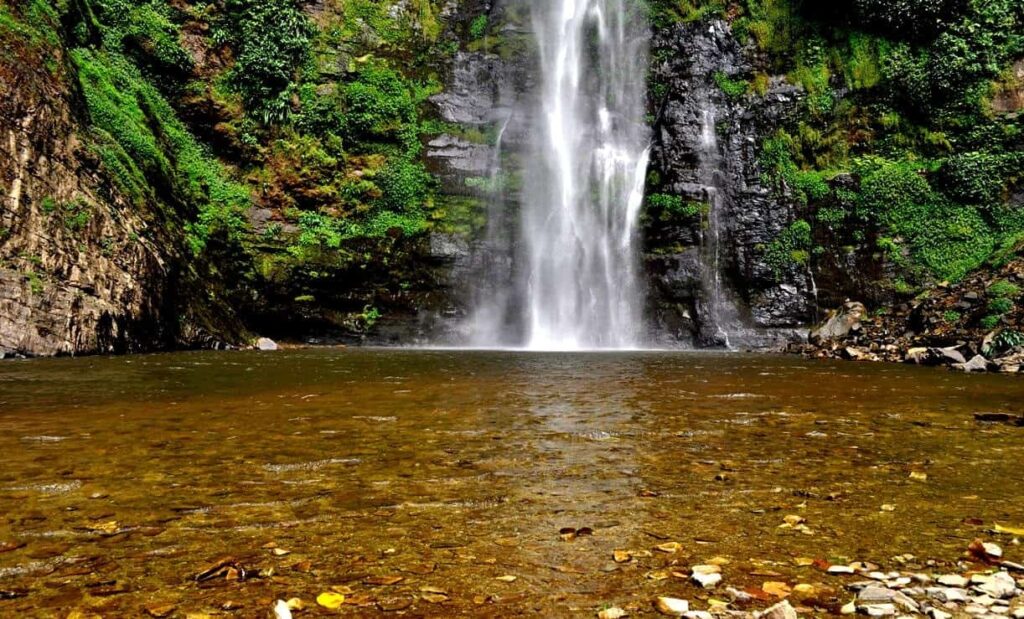
Located in the Volta Region near the town of Wli, this spectacular waterfall is the highest in West Africa, with a stunning drop of 80 meters.
Wli Waterfalls is divided into two sections: the Lower Falls and the Upper Falls.
The Lower Falls can be reached with a relatively easy 45-minute walk, while the Upper Falls requires a more challenging hike of about 2-3 hours through lush forest terrain, making it a great option for those seeking adventure and an immersive natural experience.
Why Visit Wli Waterfalls?
Trekking: Hiking to the Upper Falls is a true adventure. The route takes you through the forest, across streams, and under tall trees. Along the way, the sound of the rushing waterfall keeps you company..
Natural Beauty: Surrounded by breathtaking landscapes of the Akwapim-Togo mountain range, the Wli Waterfalls offers a serene atmosphere and a chance to connect with nature.
Wildlife: During the hike to the Upper Falls, you might spot various species of birds, butterflies, and other wildlife. Birdwatchers will especially appreciate the diverse array of species in the area.
Important Tips for Visiting:
- Wear comfortable hiking shoes if you’re planning on going to the Upper Falls, as the path can be slippery and uneven.
- Bring insect repellent, especially for the Upper Falls trek, where you might encounter mosquitoes and other insects.
5. Elmina Castle – A Key Historical Landmark
Location: Elmina, Central Region
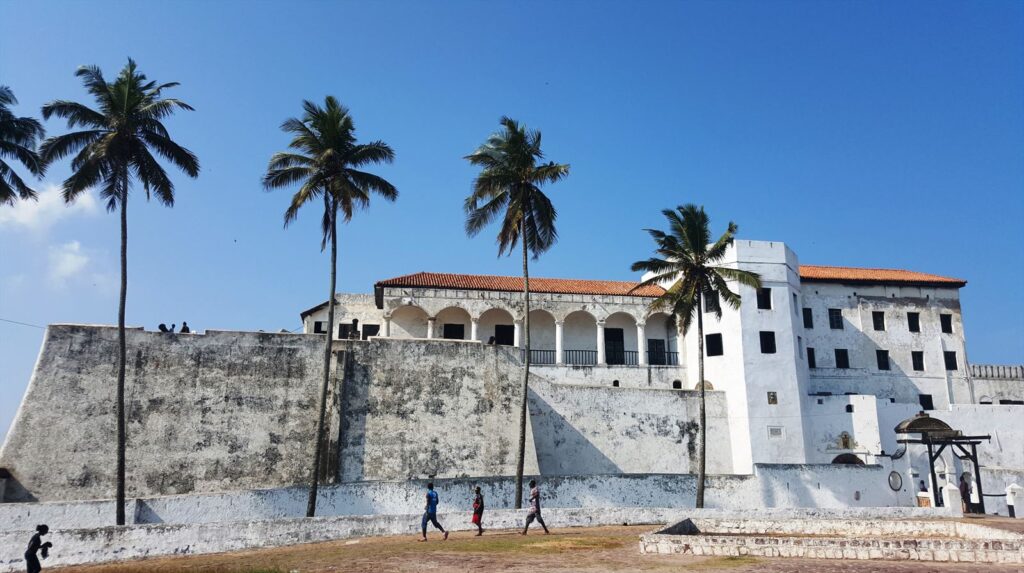
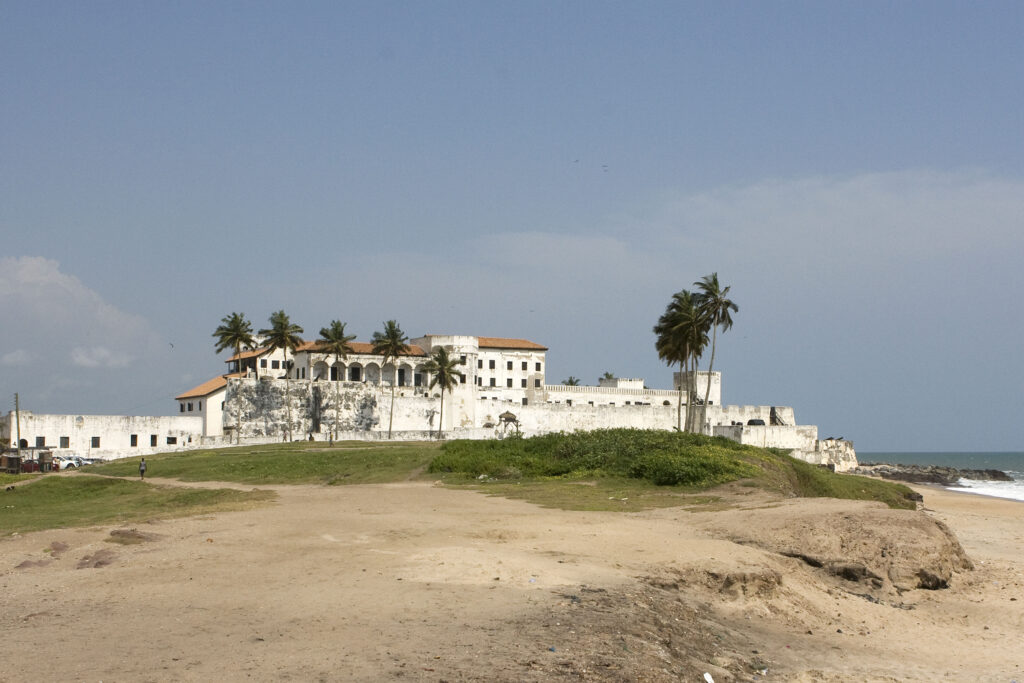

As one of the most important historical sites in Ghana, Elmina Castle was built in 1482 by the Portuguese. It became a major hub in the transatlantic slave trade. Visitors can tour the dungeons, walk through the infamous “Door of No Return,” and learn about the castle’s grim past while exploring its architecture.
Why Visit?
- Historical Significance: Elmina Castle is crucial to understanding Ghana’s history and the transatlantic slave trade.
- Stunning Views: From the castle walls, visitors can enjoy panoramic views of the Atlantic Ocean.
- Cultural Insight: Guided tours offer in-depth knowledge of the castle’s role in Ghana’s history and its legacy.
Important Tips:
- Plan to spend at least 1-2 hours exploring the castle and listening to the detailed guides.
- Prepare for an emotional and somber experience while touring the dungeons.
6. Aburi Botanical Gardens – A Serene Escape
Location: Aburi, Eastern Region
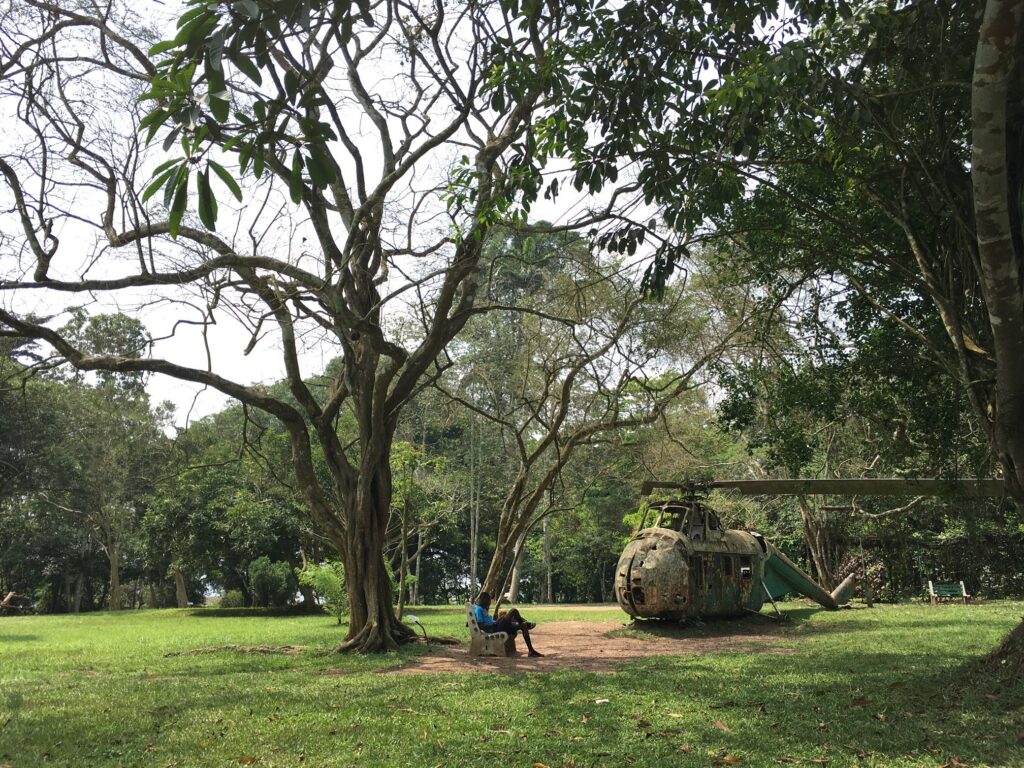
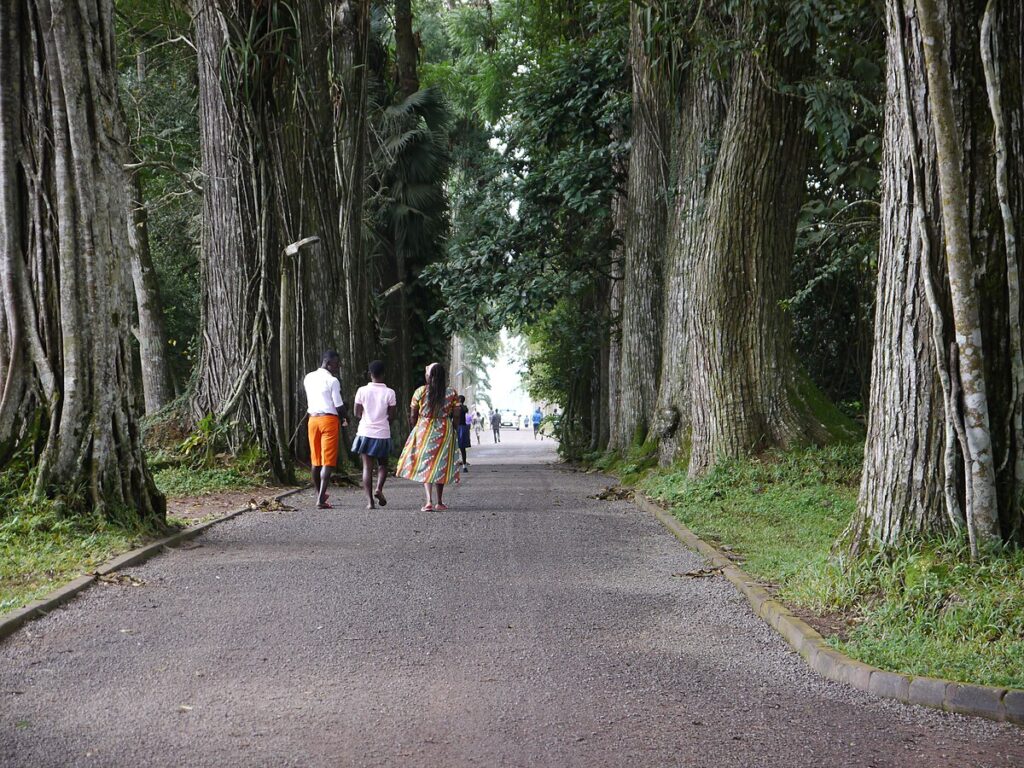
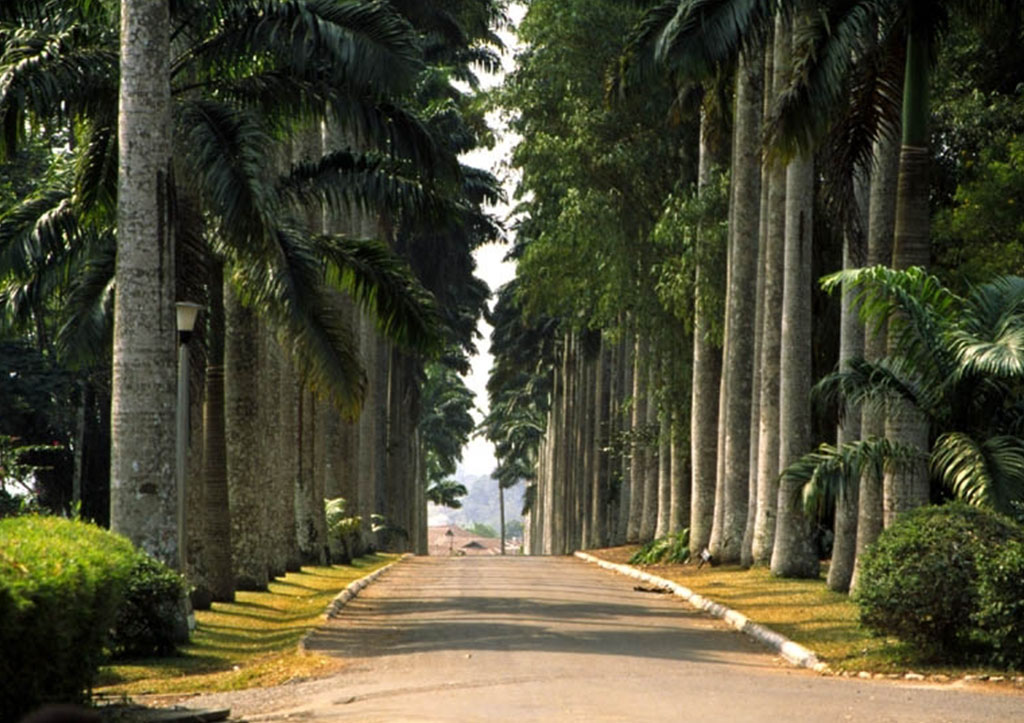
Nestled in the Eastern Region, the Aburi Botanical Gardens is a peaceful retreat from the hustle and bustle of city life. Spanning 64 acres, it features over 1,000 species of plants, making it a perfect spot for nature lovers and photographers.
Why Visit?
- Lush Scenery: The gardens are a beautifully maintained space with tropical plants, towering trees, and colorful flowers.
- Birdwatching: It’s an excellent spot for birdwatching, with several species of birds, including hornbills and doves.
- Family-Friendly: With large open spaces, it’s ideal for a family picnic or a leisurely stroll.
Important Tips:
- Bring along a picnic or snacks to enjoy during your visit, as there are some lovely spots to relax.
- Wear comfortable walking shoes, as you’ll want to explore the entire garden.
7. Lake Volta – A Majestic Waterway
Location: Eastern Region, near Akosombo

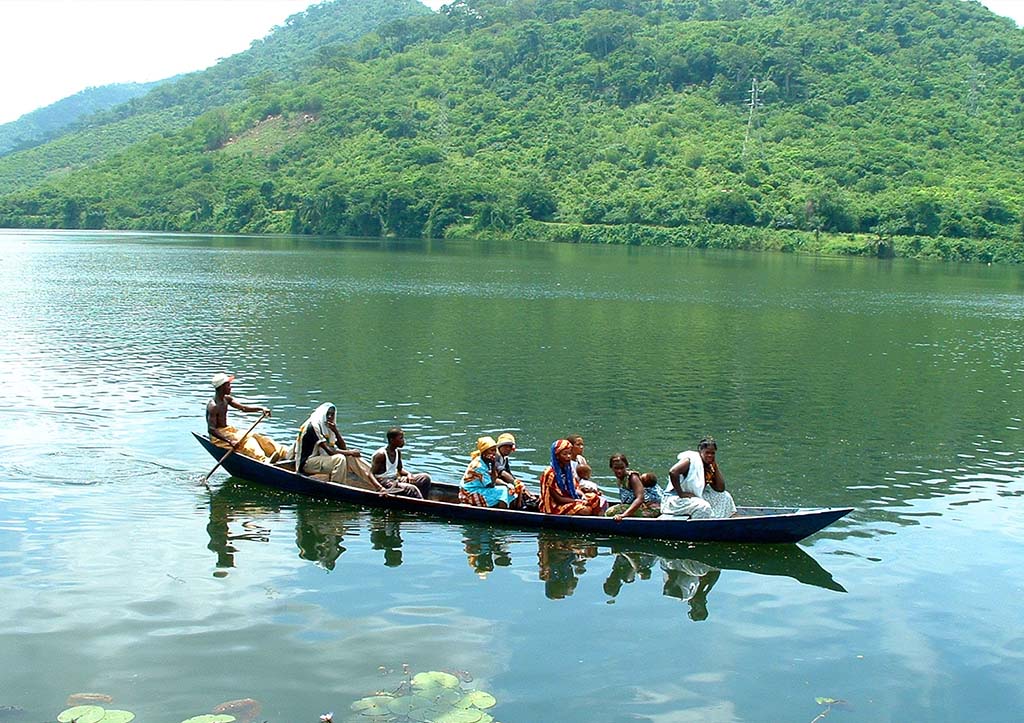
Lake Volta, one of the largest artificial lakes in the world, stretches across Volta, Eastern, and Ashanti Regions. This peaceful lake is a fantastic place for boat rides, fishing, and water sports, offering a tranquil escape from the busy cities.
Why Visit?
- Scenic Boat Rides: Take a boat tour on Lake Volta for amazing views of the surrounding hills and villages. Some tours also stop at islands within the lake.
- Water Activities: Enjoy activities such as fishing, kayaking, and swimming in the calm waters.
- The Akosombo Dam: Learn about the importance of the dam, which powers much of Ghana’s electricity, and enjoy breathtaking views from the dam site.
Important Tips:
- Always check weather conditions before heading out, as rains can affect boat tours.
- The area has limited accommodation options, so it’s a good idea to book in advance if you plan to stay overnight.
8. Kwame Nkrumah Memorial Park and Museum – Honoring Ghana’s First President
Location: Accra, Central Business District
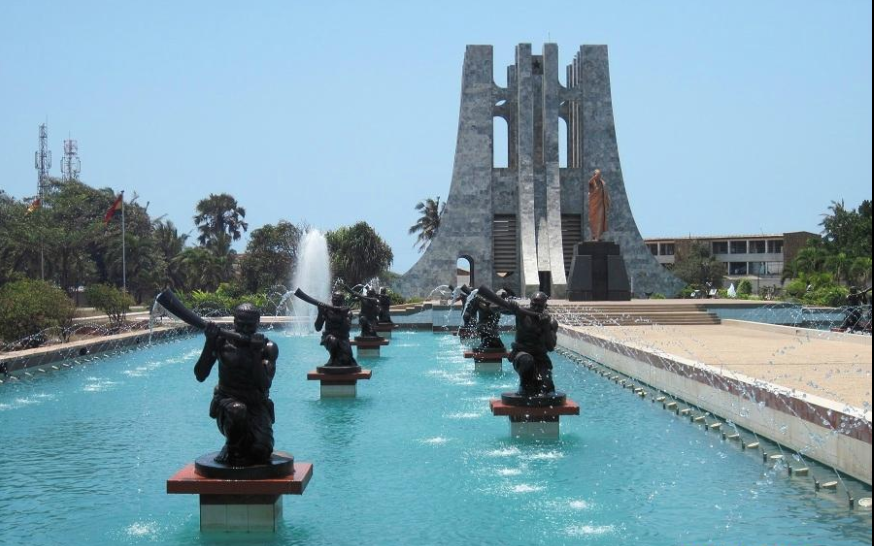
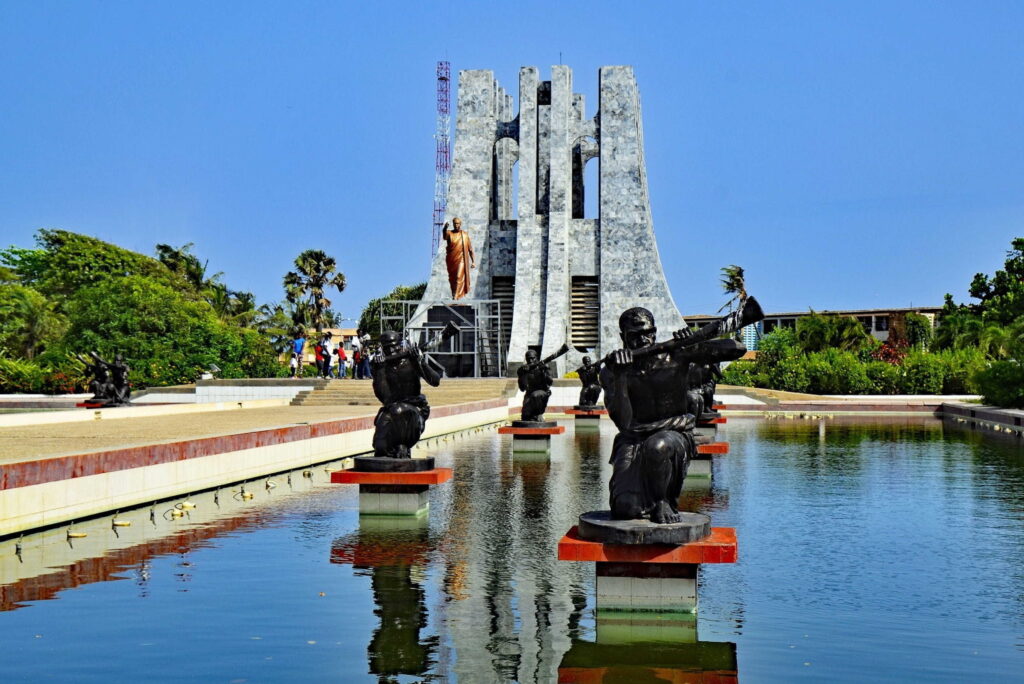

The Kwame Nkrumah Memorial Park and Museum is one of Ghana’s most important historical landmarks. It is dedicated to Dr. Kwame Nkrumah, Ghana’s first president and one of the key figures in the African independence movement. The park and museum are a must-visit for history enthusiasts and those interested in learning more about Ghana’s path to independence.
Why Visit?
Museum Exhibits: The museum displays personal items, photographs, documents, and even Nkrumah’s clothes. There are also exhibits showcasing significant moments from Ghana’s independence struggle, as well as Nkrumah’s role in the Pan-African movement.
Historical Significance: The museum celebrates Nkrumah’s life, achievements, and the independence movement in Ghana. It is housed in the former headquarters of the first President of Ghana and features important exhibits about his life, leadership, and vision for Africa’s unity.
The Memorial: The iconic Nkrumah Mausoleum, where the first President and his wife, Fathia, are buried, stands as the central feature of the park. The mausoleum is a place of reverence and reflection.
Important Tips:
- Best Time to Visit: The museum is open every day, but it’s best to visit in the morning to avoid large crowds, especially during public holidays.
- Photography: Photography is allowed in most areas, but be mindful of any restrictions in certain exhibit sections.
- Nearby Attractions: After visiting the Kwame Nkrumah Museum, take a short walk to the nearby Independence Square, a significant historical site with the Black Star Gate and large ceremonial grounds.
9. Nzulezo – The Village on Stilts
Location: Near Takoradi, Western Region
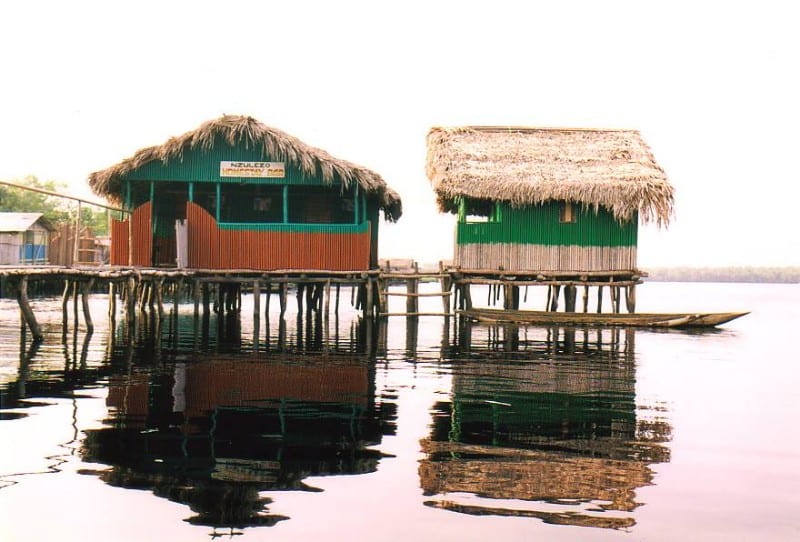
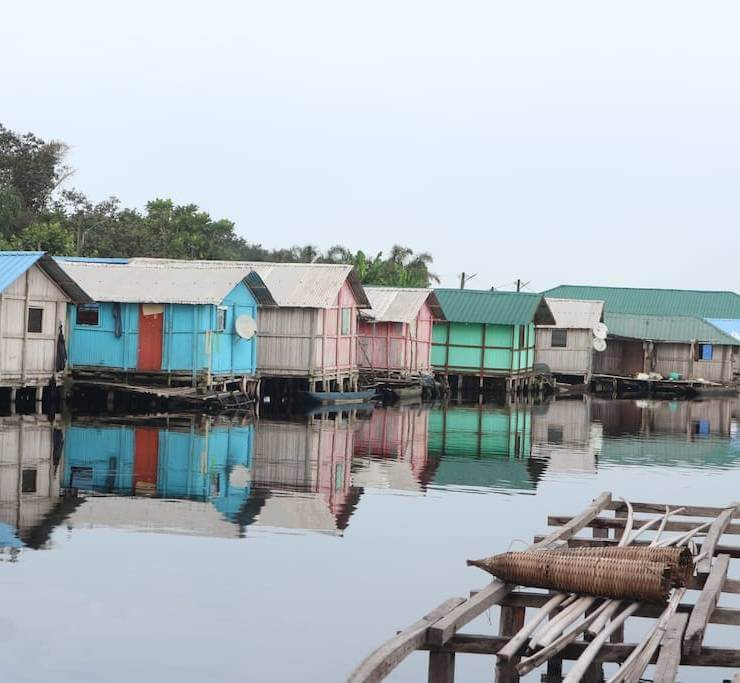

Nzulezo is a unique village located on stilts in the Lake Tadane in the Western Region of Ghana. It is an extraordinary community that is built entirely over water, offering visitors a fascinating glimpse into a traditional way of life that has been sustained for centuries.
Why Visit?
- Unique Experience: Nzulezo is one of the only stilt villages in Africa. Visitors get to experience a serene and peaceful life on the water, with houses built on stilts and connected by wooden walkways.
- Cultural Insight: The village’s residents live a traditional lifestyle, relying on fishing and farming. It’s a great place to learn about local customs, culture, and how they’ve adapted to living on water.
- Scenic Boat Ride: To get to Nzulezo, visitors take a canoe ride through the lake, which offers spectacular views of the surrounding nature and wildlife.
Important Tips:
- Best Time to Visit: The dry season (November to March) is the best time for canoe rides.
- What to Bring: Comfortable clothes, sunscreen, and a hat for sun protection.
10. The Slave River at Assin Manso – A Symbol of Freedom
Location: Assin Manso, Central Region
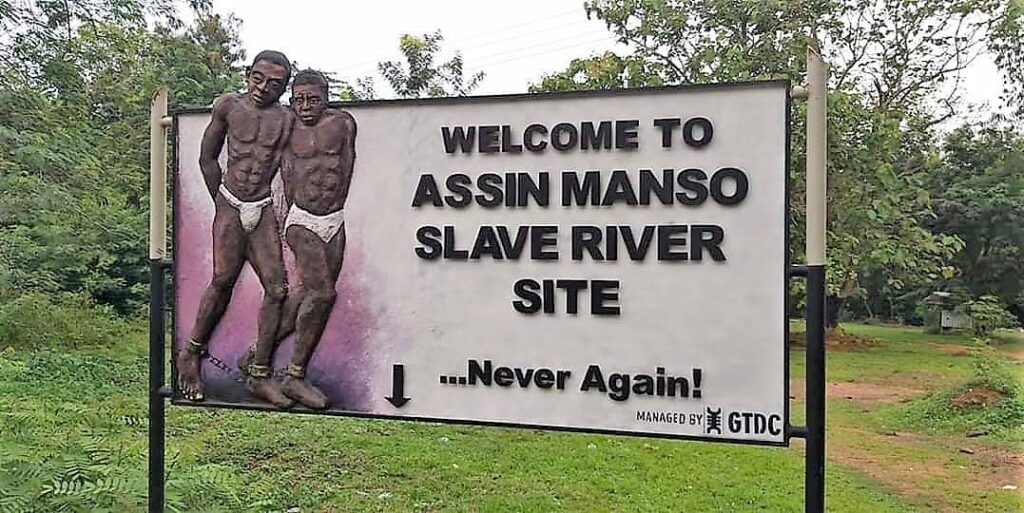

The Slave River at Assin Manso is another historical landmark where enslaved Africans were bathed before being sold at the Cape Coast and Elmina slave forts. The site holds deep significance in the history of the transatlantic slave trade and has been preserved as a reminder of the dark chapters in African history.
Why Visit?
- Emotional Experience: Visitors can learn about the history of the enslaved Africans who passed through this site, as well as the rituals associated with their final moments of freedom before being sold.
- Cultural Reflection: The site includes a monument to honor the slaves, including an emotional memorial to those who passed through Assin Manso.
- Educational Experience: It offers an educational opportunity to reflect on Ghana’s role in the transatlantic slave trade and the legacy of slavery.
Important Tips:
- Best Time to Visit: Weekdays are preferable for a more reflective experience. Avoid the rainy season as it can make the area muddy and less accessible.
- What to Bring: Comfortable shoes for walking, a camera, and a heart open to learning about the historical significance of the site.
